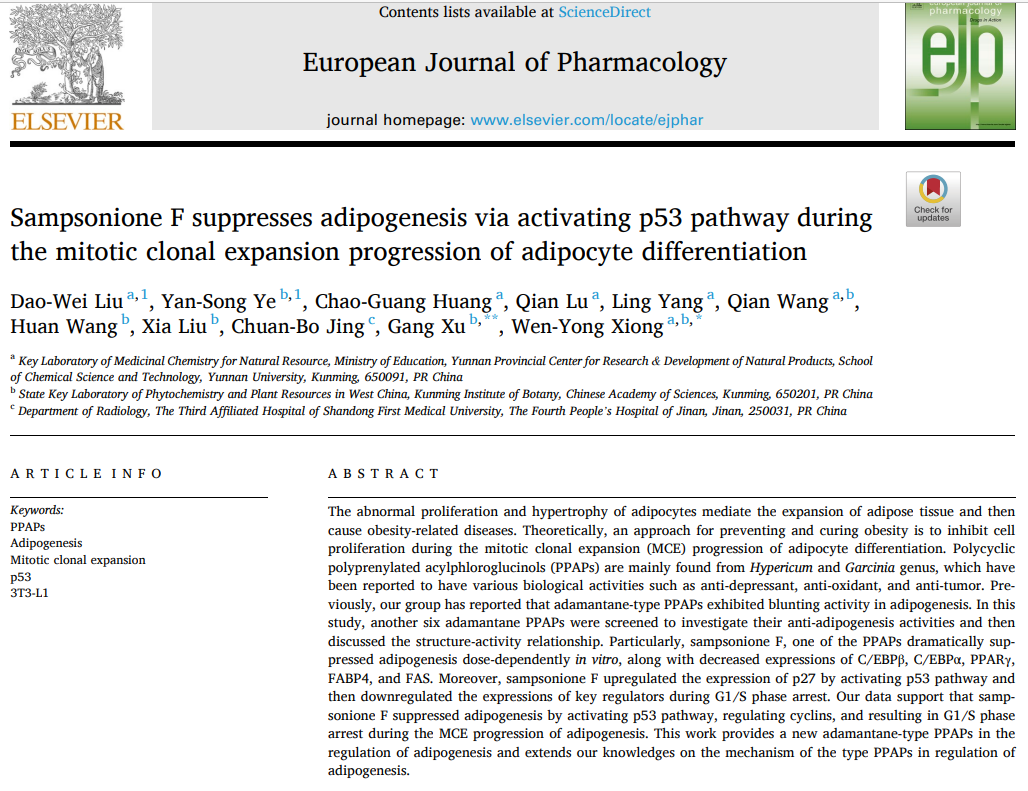Sampsonione F suppresses adipogenesis via activating p53 pathway during the mitotic clonal expansion progression of adipocyte differentiation.
By: Liu, Dao-Wei; Ye, Yan-Song; Huang, Chao-Guang; Lu, Qian; Yang, Ling; Wang, Qian; Wang, Huan; Liu, Xia; Jing, Chuan-Bo; Xu, Gang; Xiong, Wen-Yong
European journal of pharmacology 925:175002
DOI: https://doi.org/10.1016/j.ejphar.2022.175002
Published:2022-Jun-15
Abstract
The abnormal proliferation and hypertrophy of adipocytes mediate the expansion of adipose tissue and then cause obesity-related diseases. Theoretically, an approach for preventing and curing obesity is to inhibit cell proliferation during the mitotic clonal expansion (MCE) progression of adipocyte differentiation. Polycyclic polyprenylated acylphloroglucinols (PPAPs) are mainly found from Hypericum and Garcinia genus, which have been reported to have various biological activities such as anti-depressant, anti-oxidant, and anti-tumor. Previously, our group has reported that adamantane-type PPAPs exhibited blunting activity in adipogenesis. In this study, another six adamantane PPAPs were screened to investigate their anti-adipogenesis activities and then discussed the structure-activity relationship. Particularly, sampsonione F, one of the PPAPs dramatically suppressed adipogenesis dose-dependently in vitro, along with decreased expressions of C/EBPbeta, C/EBPalpha, PPARgamma, FABP4, and FAS. Moreover, sampsonione F upregulated the expression of p27 by activating p53 pathway and then downregulated the expressions of key regulators during G1/S phase arrest. Our data support that sampsonione F suppressed adipogenesis by activating p53 pathway, regulating cyclins, and resulting in G1/S phase arrest during the MCE progression of adipogenesis. This work provides a new adamantane-type PPAPs in the regulation of adipogenesis and extends our knowledges on the mechanism of the type PPAPs in regulation of adipogenesis.
